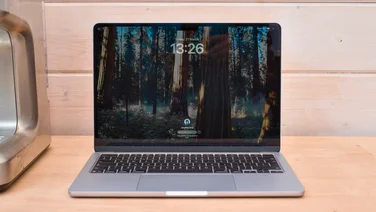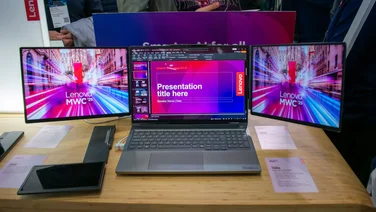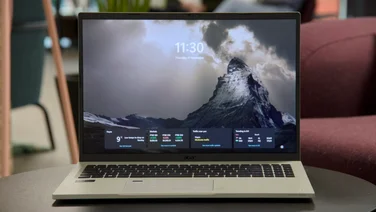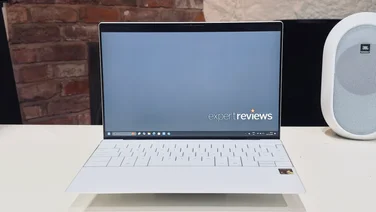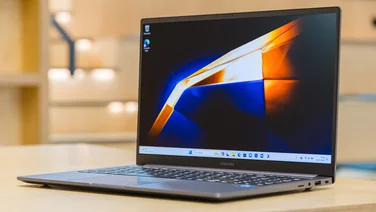To help us provide you with free impartial advice, we may earn a commission if you buy through links on our site. Learn more
- Google Pixelbook Go review: What you need to know
- Google Pixelbook Go review: Price and competition
- Google Pixelbook Go review: Design
- Google Pixelbook Go review: Keyboard and touchpad
- Google Pixelbook Go review: Display
- Google Pixelbook Go review: Performance and battery life
- Google Pixelbook Go review: Verdict
- Brilliant keyboard
- Amazing battery life
- Lightweight and slim
- Viewing angles aren’t great
- A touch expensive
- Only uses an 8th gen Intel CPU
Add Go, Lite or LE to a products name and the immediate assumption would be that its had its function or appearance curtailed in some way. Thats why I was surprised that Google chose to go with the Pixelbook Go as the name for its latest flagship Chromebook.
Where most manufacturers have opted to go in at the low-end with their Chromebooks, historically, Google has chosen to do the opposite to use its own-brand products as standard-bearers. So is the Pixelbook Go a cut-down product? Absolutely not. In fact, the Pixelbook Go is one of the best laptops you can buy for under £1,000 full stop.
READ NEXT: These are the best Chromebooks you can buy
Google Pixelbook Go review: What you need to know
This is a gorgeous laptop. Its slim, light, very nicely put together, and it has a big, bright 13.3in screen. With a comfy keyboard and large touchpad its a great all-round machine. And it houses, not an Intel Celeron as so many of its Chromebook brethren do, but a full-fat Intel Core i5 CPU. This is a proper laptop, in other words, albeit one that runs ChromeOS.
And yet, despite its relatively high price and grown-up specifications, it seems Google has lowered its sights somewhat with the Pixelbook Go. It doesnt run the very latest 10th gen Intel CPUs, instead sticking with low-power eighth-gen chips. And its much more of a basic design than the Slate and the original Pixelbook.
Google Pixelbook Go review: Price and competition
The compromise is that the Pixelbook Go starts out considerably cheaper than the Pixel Slate released in 2018 and the original Pixelbook released the year before that. Indeed, prices start at £629 for the Core m3-based Pixelbook Go, which comes with 8GB of RAM and 128GB of storage.
There are four models in the range, though, and as you progress through the ranks, the prices rise, too. I was sent the Core i5-8200Y with 8GB of RAM and 128GB of storage, which costs £829. Its a shame, though, that you dont get the model with the 4K Molecular Display until you get to the top-end Core i7 model all the others come with the more basic 1080p screen I have on the review unit.
| Intel Core m3 | Intel Core i5-8200Y | Intel Core i5-8200Y | Intel Core i7 |
| 8GB | 8GB | 16GB | 16GB |
| 64GB | 128GB | 128GB | 256GB |
| 1,920 x 1,080 | 1,920 x 1,080 | 1,920 x 1,080 | 3,840 x 2,160 |
| £629 | £829 | £949 | £1,329 |
How does this compare with other Chromebooks? Well, it turns out Google isnt the only company making high-spec Chromebooks; the Asus Chromebook Flip and Dell Inspiron Chromebook 14 are both strong rivals to the Go. Both have slightly larger 14in 1080p touchscreen displays that can folded over so you can use them like a tablet. Theyre available in similar configurations to the Pixelbook Go as well.
The Core m3 Asus Chromebook Flip C434TA can be had for a mere £550 from Argos; this has 4GB of RAM and 128GB of eMMC storage. If you want a bit more power, theres a Core i5 model you can buy with 8GB of RAM and 128GB of eMMC storage for £749. The Dell Inspiron Chromebook 14 comes with a Core i3 CPU, 4GB of RAM and a 256SSD and is similarly good value at £550.
At this price, however, a better comparison might be with a full-blown Windows 10 machine. The Acer Swift 5, for instance, is available with the tenth-gen Core i5-1035G1, 8GB of RAM and a 256GB SSD for only £70 more than the Core i5 Pixelbook Go. The HP Envy 13-aq10000na is even more reasonable and will set you back £779 for the model with an Intel Core-i5 8265U CPU, 8GB of storage and a 256GB SSD.
Where to buy our favourite alternatives: Asus Chromebook Flip C434TA – £550 – Argos | Dell Inspiron Chromebook 14 – £550 – John Lewis | Acer Swift 5 – £900 – Microsoft
Google Pixelbook Go review: Design
Its clear, then, that the Google Pixelbook Go is not a cheap option. In terms of its design, however, its right up there with the very best laptops on the market. Its not particularly flashy even the red model is pretty plain but it feels solid and beautifully built, at the same time as being very light (1.06kg) and super slim (14.5mm).
Weirdly, the most eye-catching part of the Pixelbook Go is its crinkle-cut underside. Aside from adding a little extra bit of grip, though, and giving you a talking point on the walk between meetings, it doesnt have much point. The rest of the design is unfussy yet appealing. Its gently curved corners and flat lid feel friendly and approachable and I particularly like the smooth matte finish, which Google calls finely painted magnesium; it feels lovely under the palm.
Other nice touches abound. The chassis feels remarkably rigid given how slim it is and the lid closes with a satisfyingly soft, yet solid thunk. Another nice touch is that you can open it up with just one finger without the laptop tipping back on its heels. Too many manufacturers neglect this important aspect of laptop design, making the lid magnet too strong or the gap too thin to easily get any purchase on.
Although there are some other feature highlights, notably a 1080p webcam (thats something not even Apples high-end MacBook Pro laptops have) theres not a huge amount else to get terribly excited by on the features front.
Connectivity, as youd expect, is minimal. You get a pair of USB Type-C ports, one on each side of the base towards the rear of the machine, both of which can be used to charge, output video or connect peripherals. Theres also a 3.5mm headset jack on the left edge and thats your lot for physical ports. Theres no microSD card slot or SIM card slot for on-the-go connectivity.
Wireless connectivity is covered by a simple dual-band 802.11ac card, which supports Bluetooth 4.2 and dual-band 802.11ac Wi-Fi. Again, Im slightly surprised that this machine doesnt support the latest technology (theres no support for Wi-Fi 6 or 802.11ax) and although this isnt the end of the world it is a little disappointing.
Google Pixelbook Go review: Keyboard and touchpad
The Pixelbook Gos keyboard, on the other hand, is a real highlight: its a delight to type on, whether youre a hunt-and-peck specialist or a high-speed touch-typing dynamo. It has a solid base, the key action is light, quiet and well-damped, yet just positive enough to let you know your key presses have registered and the key tops are large enough to keep typos to a minimum. Its an absolute peach.
When it comes to layout, the usual Chromebook rules apply, which wont be to everyones tastes. You get a Search button on the left-hand side where youd normally find a Caps Lock key, which has always irritated me with Chromebooks. Theres also a Google Assistant key where youd normally see the Windows or Command keys on other laptops, which is less of an imposition. If Im honest, though, Id like to see the two functions merged. That way Google can give us the Caps Lock key back and I wont have to think about which search key to press when Im looking for stuff.
Fortunately, the rest of the layout is pretty sensible. In the UK, you get a narrow but double-height Enter key. The Shift keys have a decent width to them as do the Backspace and Tab keys and the cursor cluster isnt too cramped.
The touchpad works well, too. Its spacious enough to allow you to perform multi-touch gestures comfortably and the click doesnt feel overly heavy or insubstantial. Note, though, that since its mechanical, clicking doesnt work at the very top of the pad.
READ NEXT: These are the best Chromebooks you can buy
Google Pixelbook Go review: Display
The weakest part of the Pixelbook Go has to be the display but its good enough for most uses. Its a 1080p unit measuring 13.3in across the diagonal and its perfectly sharp and reasonably bright. I measured it at 369cd/m2 with the screen filled with white; its not as bright as the brightest laptops but should be good enough for most indoor situations and even some outdoor use as long as you stick to shady areas.
Its colour-accurate, too, and has a very high contrast ratio of 2,275:1, ensuring on-screen images have real punch and presence. It isnt without its issues, however. The first is that viewing angles are disappointing: tilt the screen left and right or up and down and the display dims noticeably past around 45-degrees. Its also a little grainy and a touch more reflective than Id like, too.
The touchscreen, however, works well enough for the few times youre likely to want to use it clicking links, scrolling through web pages and the like. Youll likely stick to the keyboard and touchpad but its always nice to have the option.
Google Pixelbook Go review: Performance and battery life
Looking at the specifications, it looks like performance might be an issue, too, with Google sticking to the same range of CPUs as it used in the Pixel Slate. Still, if the results of our tests are anything to go by, theres no need for more oomph anyway.
Ive been working on the laptop for nearly a week now with no issues at all. Tens of tabs open in Chrome, with multiple large Google Sheets spreadsheets running, dont seem to faze the Pixelbook Go at all. I suspect the Core m3 might struggle a bit more when you really load it up but its clear you dont need anything faster than the Intel Core i5-8200Y or any more RAM than the 8GB supplied with the review device.
In the benchmarks, it shouldnt come as any surprise that the Pixelbook Go is about the same speed as the Google Pixel Slate we reviewed last year, then. That machine was built around the same processor and had the same amount of RAM installed. Its a little less speedy than the Dell Inspiron Chromebook 14, however:


Youll see that, in the MotionMark graphics test (and the multitasking test which also uses MotionMark), the Slate sits slightly below the Pixelbook Go in the pecking order. Thats because our Go review sample has a 1080p display where the Slate we tested had a 4K Molecular Display. Otherwise, the benchmarks are as youd expect them to be, with the Pixelbook Go sitting in mid-table.

Where the Pixelbook Go stretches out a lead over all its rivals is battery life. Quite simply, its stunning in this regard. In our video rundown test, it lasted 14hrs 15mins, which is nearly five hours longer than the Dell Inspiron Chromebook 14 and nearly six hours longer than the Pixel Slate. This really is a laptop you can work on all day without plugging it in into the mains, perhaps more so than any other conventional laptop Ive used. And the fact you can charge it via USB Type-C only adds to the convenience.
Google Pixelbook Go review: Verdict
Thats what tips the balance in favour of a five star Best Buy award for me. With battery life this good and a keyboard this usable, Ive found myself searching for reasons why I wouldnt use Pixelbook Go over any other laptop.
Indeed, now that you can run Android apps and Linux on ChromeOS there are becoming fewer and fewer reasons not to. Even the Android Lightroom app works well on this machine, removing the one reason that, in previous years, had been holding me back from using a Chromebook for work. For goodness sake, with the advent of Google Stadia, you can also play full-blown triple-A games on this thing.
The one negative is that the display isnt the best thing since sliced bread, and has comparatively poor viewing angles and high reflectivity. But that really is the only bad thing about the Pixelbook Go. All-round it is, quite simply, a superb machine that gets the balance between usability, looks and performance spot on. If you are buying a laptop this year make it your business to at least consider the Pixelbook Go.
| Google Pixelbook Go specifications | |
|---|---|
| Processor | Intel Core i5-8200Y |
| RAM | 8GB |
| Additional memory slots | No |
| Max. memory | 16GB |
| Graphics adapter | Intel UHD Graphics 615 |
| Graphics memory | Shared |
| Storage | 128GB |
| Screen size (in) | 13.3 |
| Screen resolution | 1,920 x 1,080 |
| Pixel density (PPI) | 166 |
| Screen type | Not stated |
| Touchscreen | Yes (10-point multitouch) |
| Pointing devices | Touchpad |
| Optical drive | No |
| Memory card slot | No |
| 3.5mm audio jack | Yes |
| Graphics outputs | USB Type-C |
| Other ports | USB Type-C |
| Web Cam | 1080p |
| Speakers | Stereo |
| Wi-Fi | 802.11ac |
| Bluetooth | Bluetooth 4.2 |
| NFC | No |
| W (mm) | 311 |
| D (mm) | 206 |
| H (mm) | 14.5 |
| Dimensions, mm (WDH) | 311 x 206 x 14.5mm |
| Weight (kg) – with keyboard where applicable | 1.06 |
| Battery size (Wh) | 47 |
| Operating system | ChromeOS |

